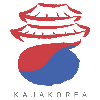Korean Lessons ᚛ Level 1 - My First Steps in Korean (Lessons 1 to 30) ᚛ Lesson 1 - Learn Hangul (part 1) - Simple vowels
Learn Hangul (part 1) - Simple vowels
Learning Hangeul
List of Simple Vowels in Korean
Hangeul is made up of 10 simple vowels.
ㅏ
The vowel ㅏ is pronounced [a], like in the word “car”.
ㅑ
The vowel ㅑ is pronounced [ya], like in the word “yard”.
ㅓ
The vowel ㅓ is pronounced as an open [o] sound, like in the word “onion”.
ㅕ
The vowel ㅕ is pronounced as an open [yo] sound, like in “young”.
ㅗ
The vowel ㅗ is pronounced as a closed [o] sound, like in the word "old".
It’s important to distinguish
ㅗ from
ㅓ, as they are two different sounds that create different words.
ㅓ is an open [o] like in “onion”, while ㅗ is a closed [o] like in “old”.
ㅛ
The vowel ㅛ is pronounced as a closed [yo] sound, like in the word "yoga".
Again, be careful to distinguish
ㅛ from
ㅕ.
ㅕ is an open [yo] like in "young", while ㅛ is a closed [yo] like in "yoga".
ㅜ
The vowel ㅜ is pronounced [oo], like in the word "good".
ㅠ
The vowel ㅠ is pronounced [yoo], like in the word "youth".
ㅡ
The vowel ㅡ has no exact equivalent in English. It sounds like the [e] in the word "eaten", but the lips are stretched rather than rounded.
ㅣ
The vowel ㅣ is pronounced [i], like in the word "ill".
Summary Table
|
Jamo |
Pronunciation |
|
ㅏ |
a |
|
ㅑ |
ya |
|
ㅓ |
eo / o (open) |
|
ㅕ |
yeo / yo (open) |
|
ㅗ |
o (closed) |
|
ㅛ |
yo (closed) |
|
ㅜ |
u / oo |
|
ㅠ |
yu / yoo |
|
ㅡ |
eu (with stretched lips) |
|
ㅣ |
i |
Writing Vowel Sounds in Korean
We will look at this in more detail later when we learn how to write syllables in Korean, but actually, it is not possible to write a vowel on its own.
Indeed, in Korean, every syllable begins with a consonant and is followed by a vowel.
So, it makes sense to ask the following question: how do you write the syllable [i] (which can mean, among other things, “a tooth”) when there’s no consonant sound in front of the [i]?
There is actually a silent consonant, meaning a consonant that makes no sound when read: this is ㅇ.
So, the word i cannot simply be written as ㅣ. You must place the consonant ㅇ before the vowel ㅣ. That gives us the word for “tooth”: 이, pronounced [i].
Vertical and Horizontal Vowels
There are two types of simple vowels in Korean:
- Vertical vowels: written top to bottom:ㅏ, ㅑ, ㅓ, ㅕ and ㅣ
- Horizontal vowels: written left to right: ㅗ, ㅛ, ㅜ, ㅠ and ㅡ
Knowing whether a vowel is vertical or horizontal is essential in Korean, because this determines where the vowel is placed in relation to the consonant that comes before it. Specifically:
- If the vowel is vertical, it is placed to the right of the consonant that precedes it
- If the vowel is horizontal, it is placed below the consonant that precedes it
In the example seen in the previous section, the word 이, the vowel ㅣ is placed to the right of the consonant, because it is a vertical vowel.
Let’s now write the word pronounced [o], the number 5. For this, we need the vowel ㅗ and the silent consonant ㅇ. We’ve seen that ㅗ is a horizontal vowel, so it must be written below the consonant that comes before it. Therefore, the word pronounced [o] is written 오.
In summary:
- With vertical vowels: 아, 야, 어, 여, 이
- With horizontal vowels: 오, 요, 우, 유, 으
Exercises
Learn more
You already know some vocabulary and sentence structures… But when you listen to Koreans speak, do you ever feel like something is missing, the meaning behind the words, the cultural nuance that makes the language truly come alive?
That’s completely normal. In Korean, proverbs and idiomatic expressions are essential to understanding how Koreans think and communicate. Without them, you can speak, but your language will feel flat and overly literal.
With 100 Korean Proverbs - Illustrated and Explained, you’ll understand not only what Koreans say, but why they say it, and what each expression reveals about their mindset and culture.
Learn more

